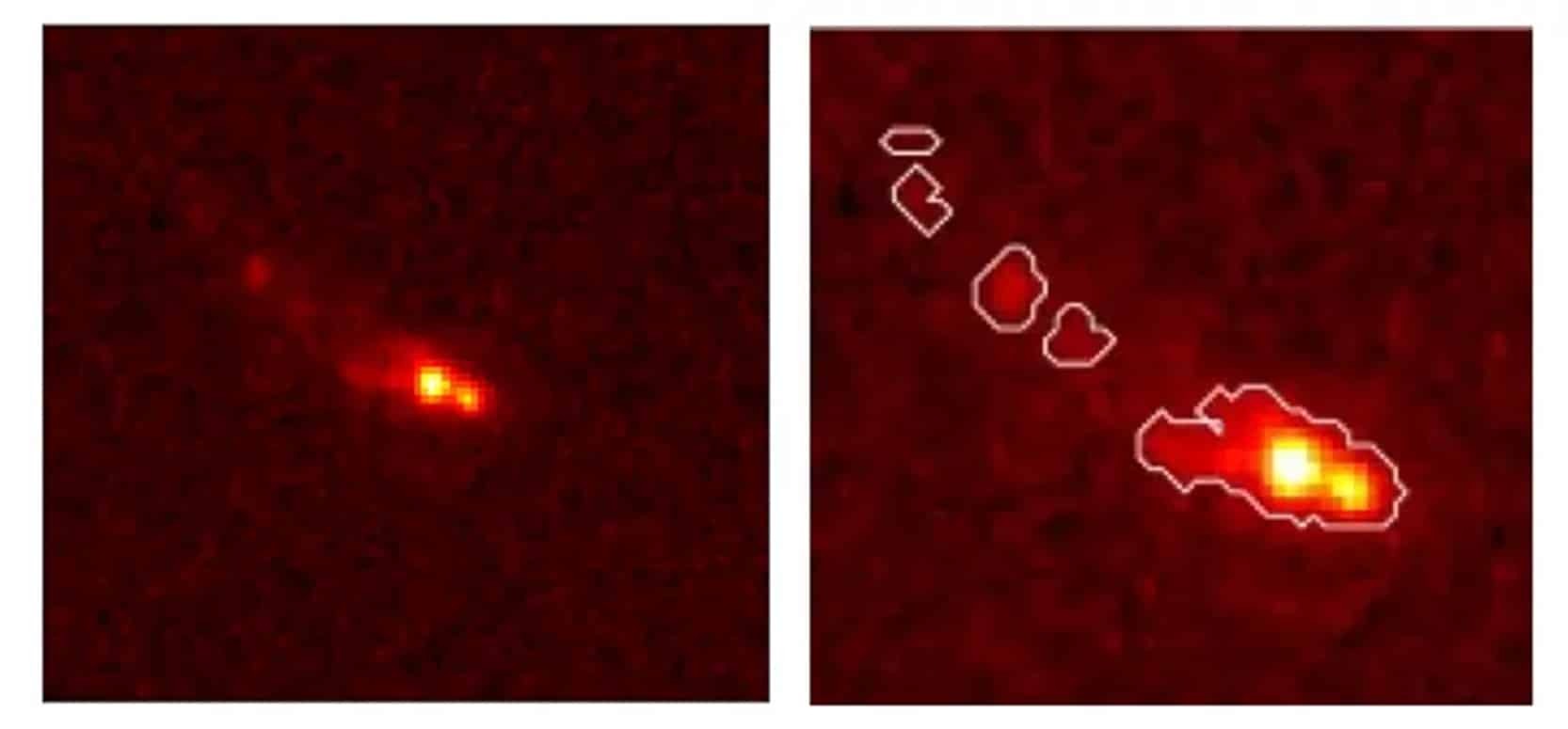The NASA/ESA Hubble Space Telescope has captured a finely detailed image of the barred spiral galaxy NGC 1097.
This Hubble image shows NGC 1097, a barred spiral galaxy some 48 million light-years away in the constellation of Fornax. The color image is made up of observations from Hubble’s Wide Field Camera 3 and Advanced Camera for Surveys in the ultraviolet, near-infrared, and optical parts of the spectrum. Seven filters were used to sample various wavelengths. The color results from assigning different hues to each monochromatic image associated with an individual filter. Image credit: NASA / ESA / Hubble / D. Sand / K. Sheth.
NGC 1097 is located approximately 48 million light-years away in the constellation of Fornax.
Otherwise known as ESO 416-20, IRAS 02441-3029 or LEDA 10488, this barred spiral galaxy was discovered on October 9, 1790 by the German-born British astronomer William Herschel.
At the center of NGC 1097 lies a supermassive black hole with a mass of 140 million times the mass of the Sun.
Around the black hole is a ring of starburst regions with a network of gas and dust that spiral from the ring to the black hole.
“The new Hubble images reveals the intricacy of the web of stars and dust at NGC 1097’s center, with the long tendrils of dust picked out in a dark red hue,” Hubble astronomers said.
“The extent to which the galaxy’s structure is revealed is thanks to two Hubble’s instruments: the Wide Field Camera 3 (WFC3) and the Advanced Camera for Surveys (ACS).”
“The idea that a single image can be taken using two different cameras is not very intuitive. However, it makes far more sense after delving into how beautiful astronomical images like this one are composed.”
“A helpful starting point is to consider what color is, exactly,” the researchers said.
“Our eyes can detect light waves at optical wavelengths between roughly 380 and 750 nm, using three types of receptors, each of which is sensitive to just a slice of that range.”
“Our brain interprets these specific wavelengths as colors. By contrast, a telescope camera like the WFC3 or ACS is sensitive to a single, broad range of wavelengths to maximize the amount of light collected.”
“Raw images from telescopes are always in grayscale, only showing the amount of the light captured across all those wavelengths.”
“Color images from telescopes are indirectly possible, however, with the help of filters. By sliding a filter over the aperture of an instrument like the WFC3 or ACS, only light from a very specific wavelength range is let through — one such filter used in this image is for green light around 555 nm.”
“This yields a grayscale image showing only the amount of light with that wavelength.”
“This multicolor image of NGC 1097 is composed of images using seven different filters in total.”
Note: This article have been indexed to our site. We do not claim legitimacy, ownership or copyright of any of the content above. To see the article at original source Click Here













